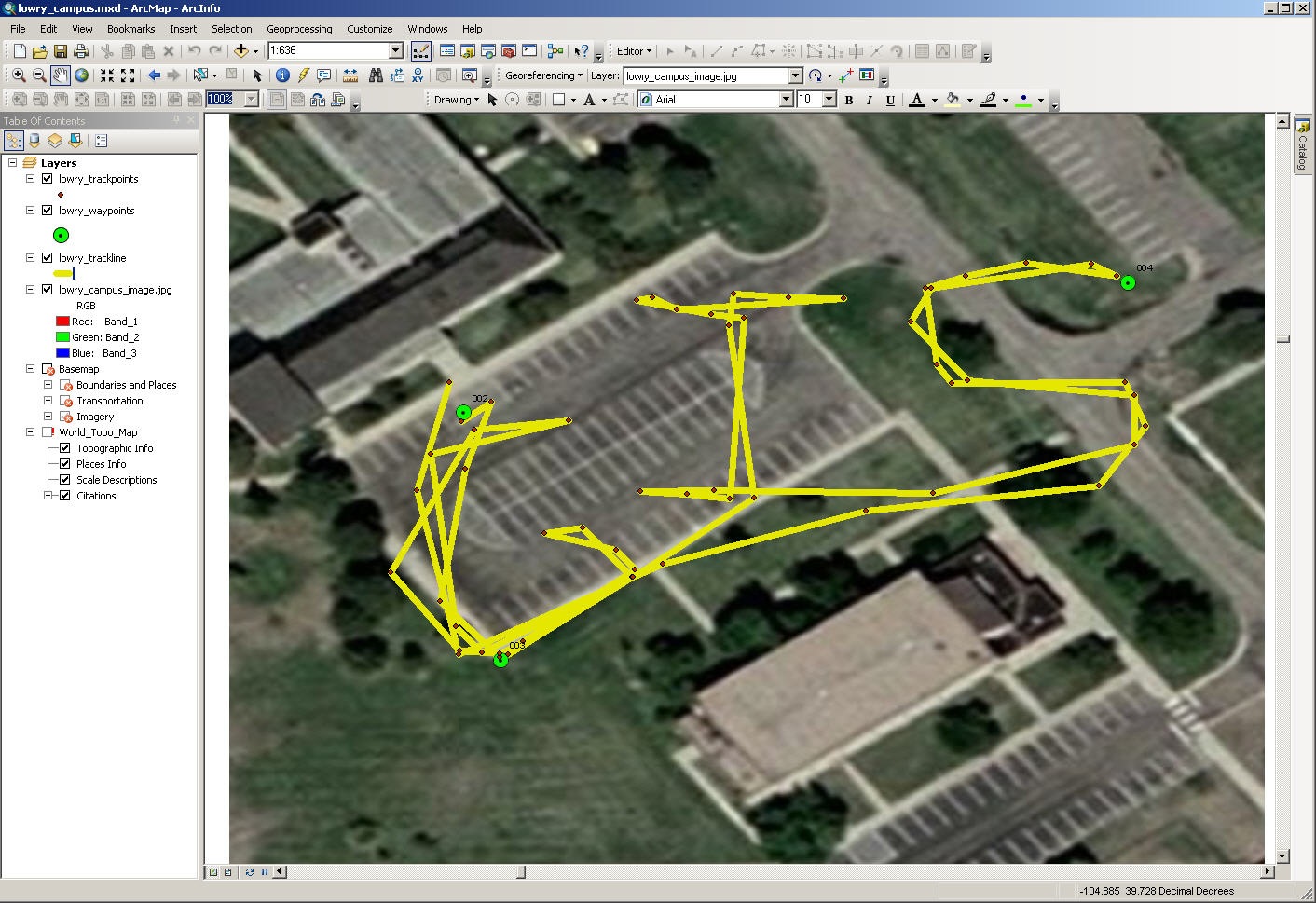Turn on suggestions
Auto-suggest helps you quickly narrow down your search results by suggesting possible matches as you type.
Cancel
- Home
- :
- All Communities
- :
- Industries
- :
- Education
- :
- Education Blog
- :
- Drawing With GPS, Mapping With GIS
Drawing With GPS, Mapping With GIS
Subscribe
2348
0
06-29-2017 12:31 AM
- Subscribe to RSS Feed
- Mark as New
- Mark as Read
- Bookmark
- Subscribe
- Printer Friendly Page
06-29-2017
12:31 AM
Most of us, whether at the beach, in the garden, or in a sandbox, have drawn words on the ground. Have you ever drawn something with your GPS receiver? As you probably are aware, all GPS receivers automatically record a track of your position. A track is analogous to you dropping bread crumbs every so often to mark where you have been. You can walk in such a way as to trace shapes of various kinds that are recorded on your track. These shapes can be letters, circles, squares, or others. Begin by examining websites showing track results, from http://www.gpsdrawing.com/gallery.html to contributions to OpenStreetMap, and others. One of the earliest GPS drawings I ever saw was a decade ago where someone drew the word “IF” in England using a car. Each letter stretched from far north of London all the way down to the English Channel!
When you return from the field, you can upload these shapes into your GIS. Use an image or map from ArcGIS Online as a backdrop for your track.

As you can see in the ArcMap session above, I drew the words “GIS” with my receiver. I often include GPS drawing while working with teachers and students and I encourage you to do the same. Why? Drawing with GPS forces us to think about spatial relationships. We must be aware of where we have walked, noting local landmarks, so that we do not cut across letters that we have already drawn. How can I walk so that each letter is shaped correctly, is distinct from other letters, and is aligned so that the word lies on an east-west axis? In the example above, because the streets on the Colorado Community College System were aligned northwest to southeast, I had to be careful not to follow the street grid, but cut diagonally across lawns for optimal results. How could I have done better? How does changing the track setting from distance to time, or changing the distance or time interval between recorded track points, alter the appearance of the letters? For added interest, have students draw their first or last name.
What shapes would you like to draw with your GPS?
- Joseph Kerski, Esri Education Manager
You must be a registered user to add a comment. If you've already registered, sign in. Otherwise, register and sign in.
About the Author
I believe that spatial thinking can transform education and society through the application of Geographic Information Systems for instruction, research, administration, and policy.
I hold 3 degrees in Geography, have served at NOAA, the US Census Bureau, and USGS as a cartographer and geographer, and teach a variety of F2F (Face to Face) (including T3G) and online courses. I have authored a variety of books and textbooks about the environment, STEM, GIS, and education. These include "Interpreting Our World", "Essentials of the Environment", "Tribal GIS", "The GIS Guide to Public Domain Data", "International Perspectives on Teaching and Learning with GIS In Secondary Education", "Spatial Mathematics" and others. I write for 2 blogs, 2 monthly podcasts, and a variety of journals, and have created over 6,500 videos on my Our Earth YouTube channel.
Yet, as time passes, the more I realize my own limitations and that this is a lifelong learning endeavor: Thus I actively seek mentors and collaborators.
Labels
-
Administration
77 -
Announcements
80 -
Career & Tech Ed
1 -
Curriculum-Learning Resources
257 -
Education Facilities
24 -
Events
72 -
GeoInquiries
1 -
Higher Education
594 -
Informal Education
281 -
Licensing Best Practices
90 -
National Geographic MapMaker
33 -
Pedagogy and Education Theory
224 -
Schools (K - 12)
282 -
Schools (K-12)
272 -
Spatial data
35 -
STEM
3 -
Students - Higher Education
245 -
Students - K-12 Schools
128 -
Success Stories
36 -
TeacherDesk
1 -
Tech Tips
117
- « Previous
- Next »